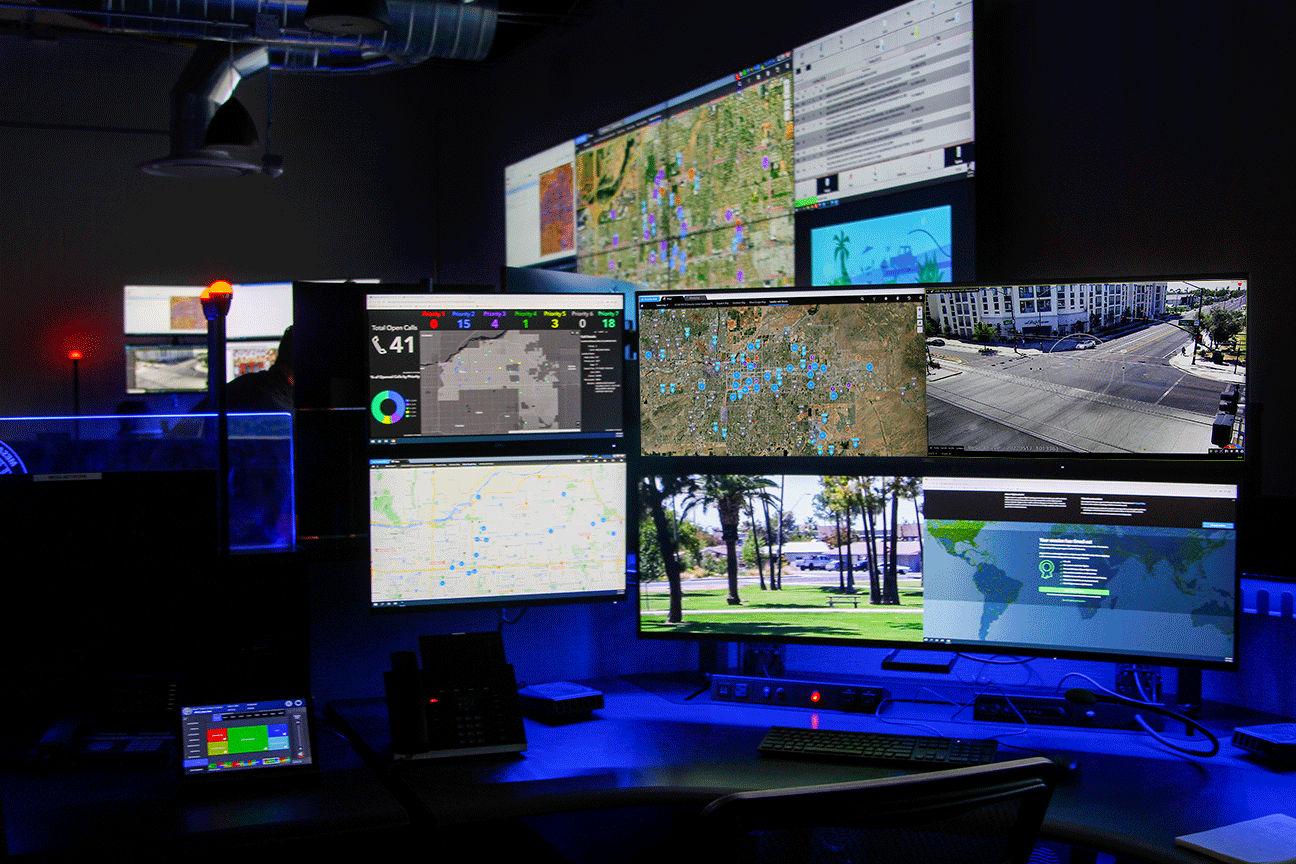
Optimizing Real-Time Crime Centers: Enhancing Police Response with Advanced Audiovisual Technology
In the realm of law enforcement, every second counts. When it comes to equipping real-time crime centers for police departments in cities or towns, the convergence of form and function is paramount. Unlike selecting attire or furnishings, where aesthetics might take precedence, in the context of command and control centers for law enforcement, audiovisual (AV) technology plays a crucial role in enabling swift and effective response to incidents.
Here are key considerations when outfitting a real-time crime center with AV technology:
1. Prioritize Security and Reliability
Real-time crime centers (RTCC's) are pivotal hubs for law enforcement operations, necessitating top-tier security and reliability. While some centers may operate around the clock, others may have specific operational hours. Regardless, these centers require robust safeguards to ensure uninterrupted functionality during active periods. Seamless communication, coordination, and documentation of vital information are essential components. Therefore, efficient technology monitoring and management are imperative to anticipate, prevent, and address any technical glitches promptly, ensuring optimal performance whenever the center is operational.
2. Design for Optimal Functionality
The effectiveness of AV technology hinges on the design and layout of the command and control center. Beyond selecting the right equipment, the space must facilitate seamless communication and the secure transmission of sensitive data. Specialists in these centers not only monitor information but also make critical decisions in real-time. Hence, the design should enable efficient data collection and dissemination of instructions, notifications, and alerts. Moreover, ergonomic considerations such as furniture arrangement, console customization, and lighting play a crucial role in enhancing user comfort, control, and accessibility.
3. Collaborate with a Qualified AV Partner
Given the mission-critical nature of real-time crime centers, partnering with a qualified AV installation provider is essential. Opt for a company that adheres to rigorous quality control standards to ensure flawless implementation of AV technology. By following industry standards and pre-staging installations, potential issues can be identified and resolved in advance. This approach not only reduces installation time but also guarantees a reliable AV system from the outset. Additionally, a dedicated service and maintenance team should be on standby to address any unforeseen issues promptly.
4. Integration of Advanced Surveillance and Analytics
Real-time crime centers leverage advanced surveillance technologies, including CCTV cameras, drones, and sensors, to gather crucial data for law enforcement operations. These systems are integrated with AV technology to provide a comprehensive view of the situation. Moreover, analytics tools analyze data in real-time, enabling law enforcement personnel to detect patterns, identify potential threats, and make informed decisions swiftly.
5. Scalability and Future-Proofing
As the landscape of crime evolves, real-time crime centers must be scalable and adaptable to accommodate future technological advancements and operational requirements. When selecting AV solutions, prioritize systems that can easily integrate with new technologies and support future expansion. This ensures that the command and control center remains effective and efficient in the long term, even as demands evolve.
6. Training and Support for Law Enforcement Personnel
Effective utilization of AV technology in real-time crime centers requires comprehensive training and ongoing support for law enforcement personnel. Training programs should cover the operation of AV equipment, data analysis tools, and emergency response protocols. Additionally, dedicated support services should be available to address any technical issues or provide guidance during critical situations, ensuring that law enforcement personnel can leverage AV technology to its fullest potential.
7. Compliance with Legal and Ethical Standards
Real-time crime centers must adhere to strict legal and ethical standards to protect the privacy and rights of individuals. When implementing AV technology, it is essential to ensure compliance with relevant laws and regulations governing data collection, storage, and usage. Additionally, ethical considerations should be taken into account to mitigate potential misuse of surveillance capabilities and uphold public trust in law enforcement operations.
Next Steps
Level 3 Audiovisual is committed to delivering world-class installation and maintenance services tailored to the needs of real-time crime centers. As trusted partners of leading manufacturers, Level 3 Audioviusual ensures access to cutting-edge technology that enhances operational efficiency. Ready to create your real time crime center? Contact us today to discuss your project requirements and discover how we can help optimize your response capabilities. Connect with us through our website or click the chatbox below for instant assistance. We look forward to collaborating with you!

